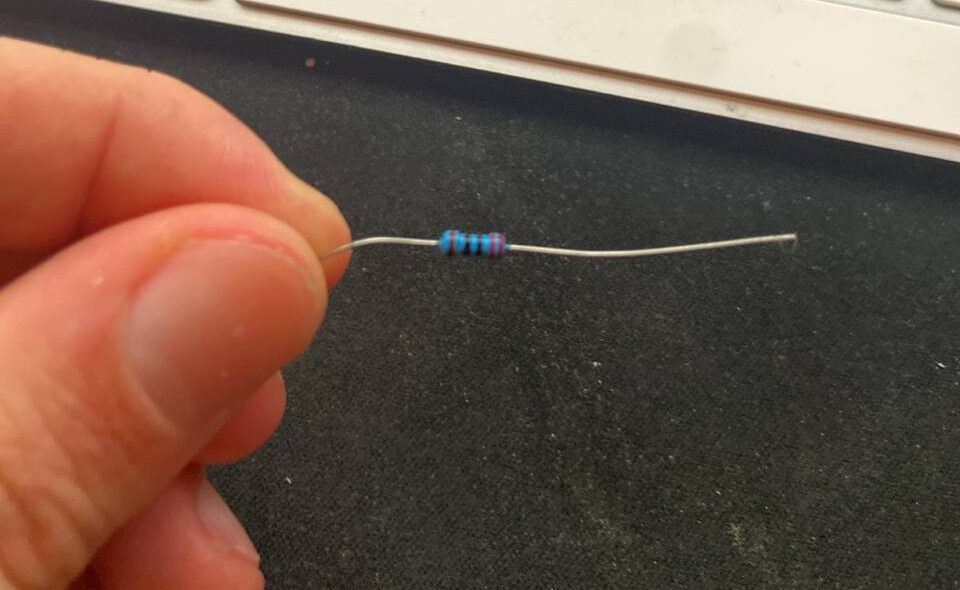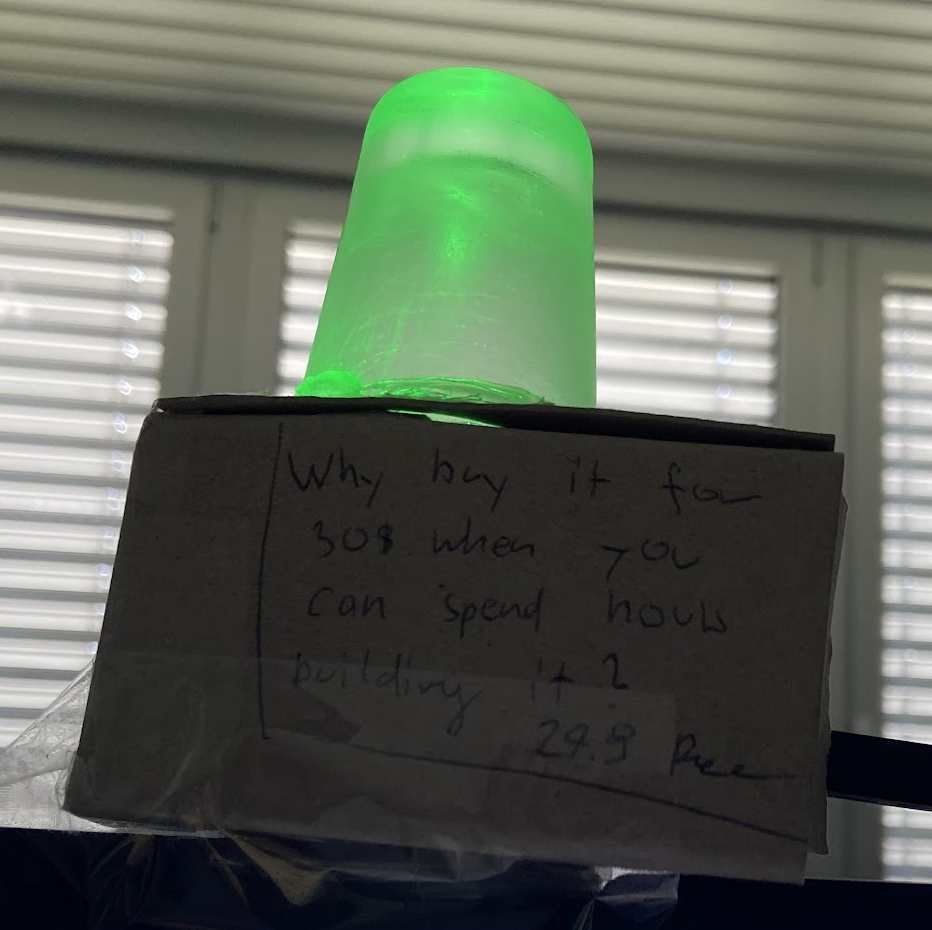After having the pleasure of using a Luxafor focus light (Looks like a flag and can be set to certain colors to indicate readiness to be talked to) for a few weeks, tragedy struck. My coworker, who is also my former roommate and the person who introduced the idea to our department, told me I had to pass it on to someone else to try out.
Hearing this on Friday, only one thought came to mind for any sane person with too much time on their hands: “It can’t be that hard; I’ll just build my own over the weekend.”
At 20:02, I sent the following message to my coworker:
Luxafor Clone in 3 2 1

I already had all the things I thought I needed, so I began piling up electronic components on my desk.
After deciding on an Arduino Nano as my microprocessor, I grabbed a few LEDs and looked up which resistor I needed. Luckily, I had written the Ohm value on the packaging of the resistor; otherwise, I would have had to measure it myself.
At 20:28, I sent the following image along with a message to my coworker:
How much ohm is that again?
 I was just joking; I tested it again to make sure past Robin hadn’t messed up or played a joke at my expense.
I was just joking; I tested it again to make sure past Robin hadn’t messed up or played a joke at my expense.
Inspired by the revolutionary fade example, I extended it to four LEDs (red, blue, green, yellow) and connected the circuit. I then had to assure my roommates that I wasn’t building a bomb and that I knew what I was doing.

Then I uploaded this Arduino code (definitely not co-written by ChatGPT) to the Arduino Nano.
After that, I ChatGPT wrote the following Python code to control the device via a Tkinter GUI:
And that’s it; it works now. No bugs whatsoever. But don’t test it too hard.
At 20:53, I sent a final message to my coworker, attaching this video:
Done
Needed not even an hour
I’m looking forward to seeing their faces on Monday and hope I get through the security check at work. If this is my last post, you’ll know I didn’t make it.
All the code is available on Github: https://github.com/nahakiole/luxame
Update: Using the leftover time of the weekend (Wasn’t planing on doing anything anyway :D) I improved the design a bit and updated it to use a RGB led):



